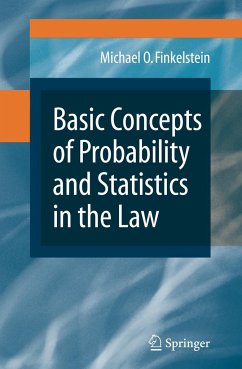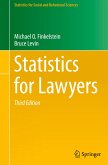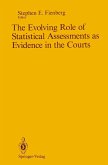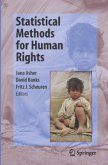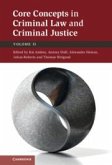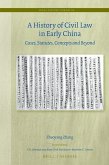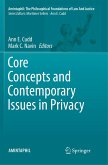This book shows how basic statistical tools have been applied in real legal disputes. Examples range over diverse fields of law, such as mass torts, securities law, and capital punishment, and will be of interest to both statisticians and lawyers.
When as a practicing lawyer I published my ?rst article on statistical evidence in 1966, the editors of the Harvard Law Review told me that a mathematical equa- 1 tion had never before appeared in the review. This hardly seems possible - but if they meant a serious mathematical equation, perhaps they were right. Today all that has changed in legal academia. Whole journals are devoted to scienti?c methods in law or empirical studies of legal institutions. Much of this work involves statistics. Columbia Law School, where I teach, has a professor of law and epidemiology and other law schools have similar "law and" professorships. Many offer courses on statistics (I teach one) or, more broadly, on law and social science. The same is true of practice. Where there are data to parse in a litigation, stat- ticians and other experts using statistical tools now frequently testify. And judges must understand them. In 1993, in its landmark Daubert decision, the Supreme Court commanded federal judges to penetrate scienti?c evidence and ?nd it "re- 2 liable" before allowing it in evidence. It is emblematic of the rise of statistics in the law that the evidence at issue in that much-cited case included a series of epidemiological studies. The Supreme Court's new requirement made the Federal Judicial Center's Reference Manual on Scienti?c Evidence, which appeared at about the same time, a best seller. It has several important chapters on statistics.
Hinweis: Dieser Artikel kann nur an eine deutsche Lieferadresse ausgeliefert werden.
When as a practicing lawyer I published my ?rst article on statistical evidence in 1966, the editors of the Harvard Law Review told me that a mathematical equa- 1 tion had never before appeared in the review. This hardly seems possible - but if they meant a serious mathematical equation, perhaps they were right. Today all that has changed in legal academia. Whole journals are devoted to scienti?c methods in law or empirical studies of legal institutions. Much of this work involves statistics. Columbia Law School, where I teach, has a professor of law and epidemiology and other law schools have similar "law and" professorships. Many offer courses on statistics (I teach one) or, more broadly, on law and social science. The same is true of practice. Where there are data to parse in a litigation, stat- ticians and other experts using statistical tools now frequently testify. And judges must understand them. In 1993, in its landmark Daubert decision, the Supreme Court commanded federal judges to penetrate scienti?c evidence and ?nd it "re- 2 liable" before allowing it in evidence. It is emblematic of the rise of statistics in the law that the evidence at issue in that much-cited case included a series of epidemiological studies. The Supreme Court's new requirement made the Federal Judicial Center's Reference Manual on Scienti?c Evidence, which appeared at about the same time, a best seller. It has several important chapters on statistics.
Hinweis: Dieser Artikel kann nur an eine deutsche Lieferadresse ausgeliefert werden.
From the reviews:
"...A 'shorter and mathematically less challenging' version of an earlier co-authored book, Statistics for Lawyers. ...Full of legal argument and counter-argument forensically dissected by the author. ...The book requires concentration but is fun to read. ...Presents an excellent treatment of a fascinating field." (International Statistical Review, 2010, 78, 1, 134-159)
"This work is a good introductional textbook on statistics and probability for lawyers. ... The book contains ... many examples (sometimes with numerical data and simple calculations) of courts decisions and discussions of real life causes. ... Special attention is paid to the statistical meaning of DNA-testing procedures, analysis of epidemiologic data and discrimination causes." (R. E. Maiboroda, Zentralblatt MATH, Vol. 1173, 2009)
"Basic Concepts of Probability and Statistics in the Law (BCPSL) is an introduction to our discipline for law students and lawyers who want to understand basic statistics and how statistics are used in legal cases. ... BCPSL contains some new cases and was a fun and much faster read. ... students would enjoy and learn from BCPSL. ... a good choice for someone who has already had a basic statistics course or as complementary reading in an introductory course." (Dalene Stancl, Journal of the American Statistical Association, Vol. 106 (493), March, 2011)
"The author, a lawyer by training, wrote this book as a more accessible ... version of his more comprehensive book on the topic, Statistics for Lawyers (2000). This slimmer version of the more comprehensive book makes for a quick, enlightening read. While this book was written primarily for law students, it can be understood by those with formal statistical training who want to understand an area of application of statistical concepts. ... statistician or student of statistics would be able to benefit from this book." (Willis A. Jensen,Technometrics, Vol. 52 (4), November, 2010)
"...A 'shorter and mathematically less challenging' version of an earlier co-authored book, Statistics for Lawyers. ...Full of legal argument and counter-argument forensically dissected by the author. ...The book requires concentration but is fun to read. ...Presents an excellent treatment of a fascinating field." (International Statistical Review, 2010, 78, 1, 134-159)
"This work is a good introductional textbook on statistics and probability for lawyers. ... The book contains ... many examples (sometimes with numerical data and simple calculations) of courts decisions and discussions of real life causes. ... Special attention is paid to the statistical meaning of DNA-testing procedures, analysis of epidemiologic data and discrimination causes." (R. E. Maiboroda, Zentralblatt MATH, Vol. 1173, 2009)
"Basic Concepts of Probability and Statistics in the Law (BCPSL) is an introduction to our discipline for law students and lawyers who want to understand basic statistics and how statistics are used in legal cases. ... BCPSL contains some new cases and was a fun and much faster read. ... students would enjoy and learn from BCPSL. ... a good choice for someone who has already had a basic statistics course or as complementary reading in an introductory course." (Dalene Stancl, Journal of the American Statistical Association, Vol. 106 (493), March, 2011)
"The author, a lawyer by training, wrote this book as a more accessible ... version of his more comprehensive book on the topic, Statistics for Lawyers (2000). This slimmer version of the more comprehensive book makes for a quick, enlightening read. While this book was written primarily for law students, it can be understood by those with formal statistical training who want to understand an area of application of statistical concepts. ... statistician or student of statistics would be able to benefit from this book." (Willis A. Jensen,Technometrics, Vol. 52 (4), November, 2010)
